So many problems, so many solutions! In our Common Problems & Remedies edition, our expert growers have been sharing tales of garden downfalls and tips to help get you back on top of your growing game. We’re letting the good times roll with our 5 Cool Ways to Identify, Prevent, and Solve Problems in Your Garden. The best part? Many of these suggestions are easy to implement, no matter your level of growing experience.
Root Zone Toolkit
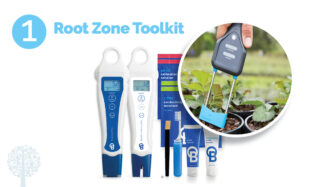
Growing a garden is about more than just planting a seed and offering it water and sunlight. Every serious grower needs to measure the pH levels in their growing medium to ensure plants can access the nutrients they need to grow. The Bluelab Soil pH Pen can help determine if your medium is too alkaline or acidic. It’s versatile and works in soil, coco coir, potting mixes, and solutions. The pen also takes your growing media’s temperature so plants can grow and develop correctly. The Bluelab Pulse Meter is also recommended to check that you aren’t over- or under-feeding your plants. Measure the EC or PPM to see if the garden is getting enough. This gadget will lead to healthier plants and less waste of expensive nutrient solutions; it also measures moisture levels and the temperature of the root zone. If nothing else, we recommend purchasing a moisture meter. Overwatering is a common gardening mistake that leads to diseases and crop loss, and even on the hottest days, your plants may not be as thirsty as you think. Arm yourself with a few gadgets to help your growing ventures along!
Disease Identification Tools
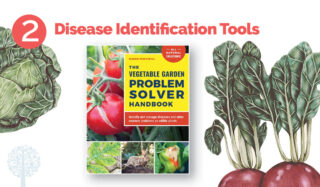
It’s not always easy to identify what’s hurting your plants with the naked eye. In The Vegetable Garden Problem Solver Handbook, author Susan Mulvihill recommends investing in a few handy tools to help you diagnose various garden issues. A magnifying glass or something as simple as a cell phone camera can help you investigate a potential problem and examine plant tissue that doesn’t look right. For example, zooming in on mold spores or spots will help narrow down what you’re dealing with. Mulvihill also suggests a microscope for getting up close and personal with the pests or diseases plaguing your garden. Various apps help identify plant diseases; some are free, others aren’t. Finally, gardening books (like Mulvihill’s fantastic read) and websites (like GCMag.co!) will help you understand what’s attacking your plants and how to deal with the issue for good.
Know Your Soil
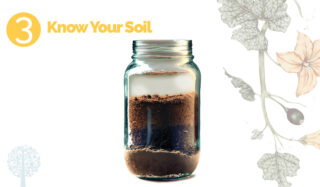
Do you know what kind of dirt you have? Every garden’s unique soil texture is determined by a balance of the three main mineral components – sand, clay, and silt. Together, these affect how the soil absorbs water, nutrients, and air. If the balance isn’t right, your plants won’t thrive as well as they should. Take a sample of the garden soil and send it to a lab to be tested, or perform an easy DIY test at home. Fill a mason jar with two cups of earth and fill the rest with water. Shake well and let it settle for a day. Sand will fall to the bottom, silt forms the middle layer, and clay settles on the top. Organic matter floats on the water’s surface. A fertile soil is relatively balanced (i.e., 30% sand, 40% silt, 30% clay) and is called a loam soil. If your soil needs improvement, you can immediately fix it by adding compost to boost drainage capabilities, water retention, and soil fertility.
Beneficial Bugs
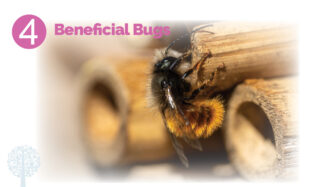
Sometimes, we get so caught up in controlling pest problems that we forget to encourage beneficial bugs to take refuge in our gardens. Gardening organically and intercropping with a wide range of native plants will encourage pollinators to pop by for a snack. Offer a clean water source and shelter (like an insect hotel) so that beyond bees and butterflies, predators and parasitizers are attracted to your gardening space as well. These include ladybugs, praying mantids, green lacewing larvae, parasitic wasps, robber flies, hoverflies, soldier beetles, spiders, and more. These garden allies will protect plants from various pest problems, such as aphids, caterpillars, thrips, and beetles. Attracting beneficial insects to the outdoor garden is easy enough, but indoors, you’ll need to pay special attention to what you need to help you with your problem. Kits containing predator bugs can be purchased online, ready for you to release into the grow room for fast-acting and organic pest control.
Dear Diary
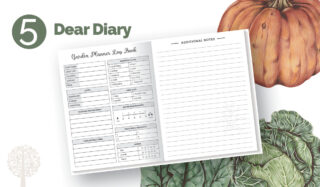
A garden journal is one of the most understated ways to help you keep track of your successes and failures. Any notebook (digital or paper) will do, but we love The Garden Journal, an heirloom-quality record keeper compiled by garden personality and QVC host Linda Vater. Keep track of daily occurrences in the garden throughout all seasons and note any issues, such as pest problems or diseases. Jot down what you noticed, how you solved it, and what you can do differently in the future. For example, after discovering a cabbage worm infestation on your kale, you might want to write a note as a reminder to cover future Brassica family crops with transparent cloth when planting to protect them from egg-laying white butterflies. Problem solved! Even though you don’t think you’ll forget, by the time the next growing season rolls around, you probably will. This journal covers five years of gardening so you can refer back and learn from your mistakes or build on your triumphs. Go you!